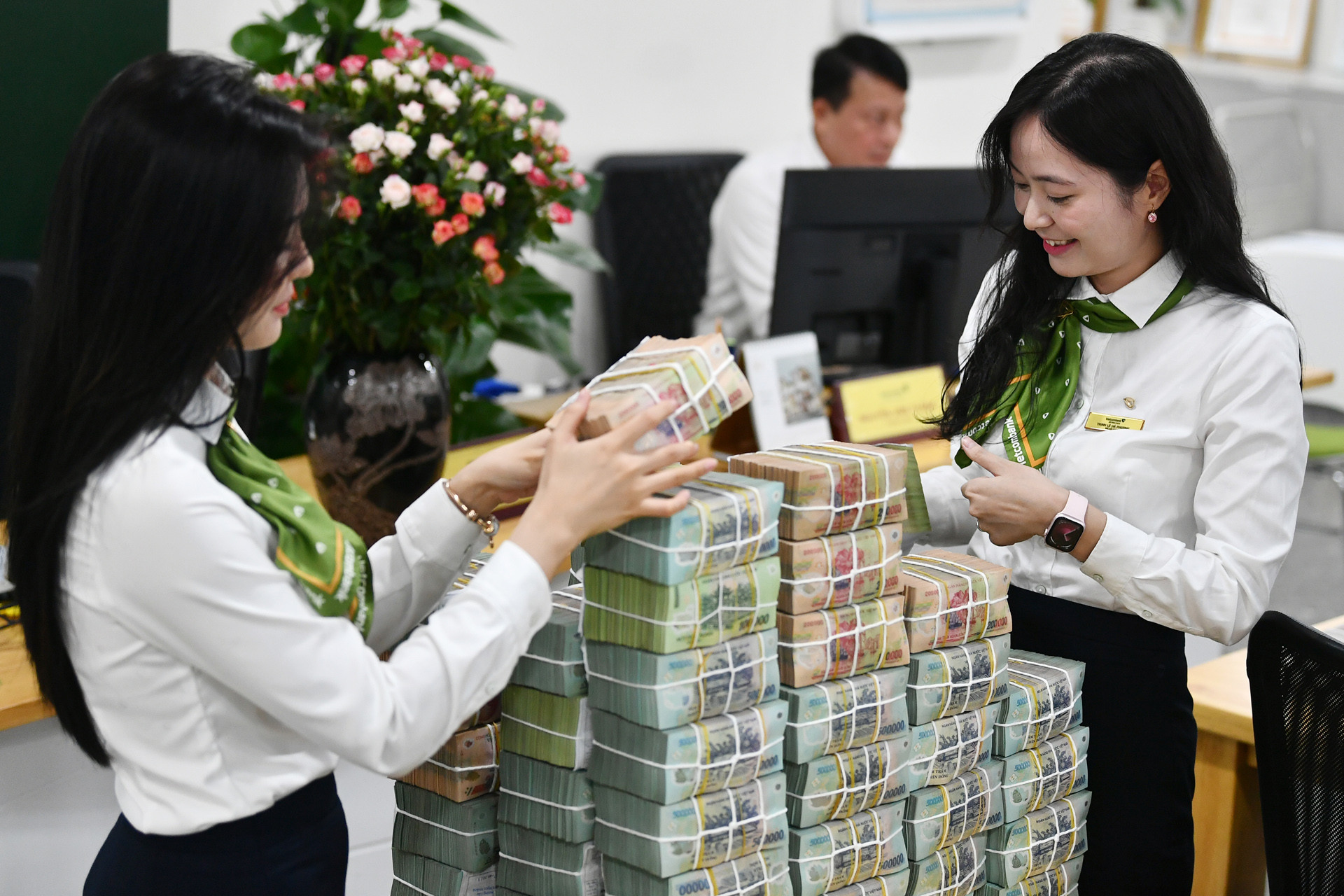
Individual deposits in Vietnamese banks hit a new record. Photo: Nam Khanh
According to data recently released by the State Bank of Vietnam (SBV), total deposits from households and businesses at credit institutions reached nearly 15 quadrillion VND (approximately $590 billion) by the end of March 2025, up 1.83% from the previous month.
Of this amount, deposits from individuals alone rose significantly to 7.46 quadrillion VND (around $293 billion), marking a 5.73% increase since the start of the year - a historic high. In March alone, individuals deposited an additional 103.8 trillion VND (approximately $4.1 billion) into banks.
Meanwhile, corporate deposits stood at around 7.52 quadrillion VND (about $295 billion), down 1.92% compared to late 2024, but still an increase of more than 158 trillion VND ($6.2 billion) from February.
Money supply and credit expansion remain robust
The SBV also reported that total money supply reached over 18.45 quadrillion VND (about $726 billion) by March 2025, up nearly 3% year-to-date. As of late May 2025, credit growth reached 6.52%, significantly higher than the 2.41% increase seen during the same period in 2024.
Despite the surge in deposits and credit growth, interest rates continued their downward trend. By June 9, deposit interest rates for 1-3 month terms ranged from 1.6% to 4.2% per year; 6-9 month terms from 2.9% to 5.45%; and 12-month terms typically hovered between 3.7% and 5.6%.
Loan interest rates were also on the decline. As of April 10, the average lending rate for new bank transactions stood at 6.34% annually, down 0.6 percentage points compared to the end of 2024.
Supportive lending programs for key sectors
From late February 2025, banks began a coordinated reduction in deposit rates, laying the groundwork for lower lending rates to assist business recovery.
Additionally, the banking sector has launched preferential loan programs for five priority sectors, with interest rates not exceeding 4% per year. This move has enabled small and medium enterprises, exporters, and high-tech firms to access affordable capital.
Policy-driven credit programs, such as loans for social housing, forestry and fisheries, and housing for individuals under 35, have helped stimulate production, business activities, and real estate recovery.
Tuan Nguyen